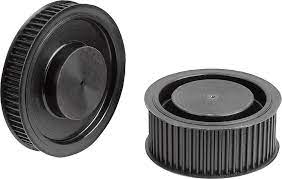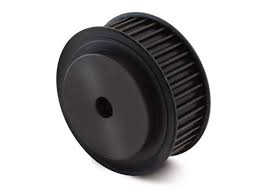Product Description
Customized Aluminum Htd 3m/5m/8m/14m Drive Synchronous Wheel Taper Bore Timing Pulley
| Teeth profile | Trapezoidal toothed | MXL, XXL, XL, L, H, XH, XXH |
| T-toothed | T2.5, T5, T10, T20 | |
| Arc toothed | HTD3M, HTD5M, HTD8M, HTD14M, HTD20M, Gt2, Gt3, Gt5 | |
| S-toothed | S2M, S3M, S4.5M, S5M, S8M, S14M | |
| Parabolic-toothed | P2M, P3M, P5M, P8M, P14M | |
| Y-toothed | G2M, G3M, G5M, Y8M | |
| Teeth Quantity | 10-150 teeth or customized | |
| Inner Bore | 2-200mm H7 precision or customized | |
| Belt width | 4mm, 6mm, 9mm, 10mm, 12mm, 15mm, 20mm, 25mm, 30mm, 40mm, 50mm, 1/4”, 5/16”, 3/8”, 1/2”, 3/4”, 1”, 1.5”, 2”or customized | |
| Material | carbon steel C45, Aluminum 6061, 6082 | |
| Surface treatment | Anodize,Black Oxide,Phosphate, Galvanization, Nitriding, Dichromate | |
Related products
Timing pulley:
Related products:
Company:
/* January 22, 2571 19:08:37 */!function(){function s(e,r){var a,o={};try{e&&e.split(“,”).forEach(function(e,t){e&&(a=e.match(/(.*?):(.*)$/))&&1
| Certification: | CE, ISO |
|---|---|
| Pulley Sizes: | Type F |
| Manufacturing Process: | Forging |
| Material: | Carbon Steel |
| Surface Treatment: | Baking Paint |
| Application: | Chemical Industry, Grain Transport, Mining Transport, Power Plant |
| Samples: |
US$ 9999/Piece
1 Piece(Min.Order) | |
|---|
| Customization: |
Available
| Customized Request |
|---|

How do HTD pulleys contribute to the functioning of medical and laboratory equipment?
HTD pulleys play a significant role in the functioning of medical and laboratory equipment, enabling precise and reliable movement of components and facilitating essential processes. Here’s a detailed explanation of how HTD pulleys contribute to the functioning of medical and laboratory equipment:
1. Sample Handling and Transport:
In medical and laboratory equipment, such as centrifuges and automated sample handling systems, HTD pulleys are used to drive the movement of sample holders, racks, or trays. The pulleys, in conjunction with belts or timing systems, facilitate the precise and controlled transport of samples within the equipment. This allows for accurate positioning, sorting, and delivery of samples, ensuring efficient workflows and reliable analysis or testing.
2. Fluid Handling and Pumping:
HTD pulleys are utilized in medical and laboratory equipment that involves fluid handling and pumping, such as liquid chromatography systems or diagnostic instruments. The pulleys, combined with belts or timing systems, drive the rotation of pumps, valves, or syringe drives, enabling the controlled flow of fluids. This precise fluid handling is crucial for accurate dosing, mixing, or analysis, ensuring reliable results and maintaining the integrity of experiments or medical procedures.
3. Motion Control in Robotic Systems:
In robotic systems used in medical and laboratory applications, HTD pulleys are employed to control the movement of robotic arms, grippers, or other robotic components. The pulleys, along with belts or timing systems, drive the motion of these components, enabling precise positioning, sample handling, or instrument manipulation. This contributes to the automation and efficiency of various processes, such as sample preparation, liquid handling, or high-throughput screening.
4. Imaging and Scanning Mechanisms:
HTD pulleys are used in medical and laboratory equipment that involves imaging or scanning mechanisms, such as medical imaging devices or microscopy systems. The pulleys, in combination with belts or timing systems, drive the movement of scanning stages or sample holders, allowing for precise positioning and scanning of samples. This ensures accurate and high-resolution imaging or scanning, enabling detailed analysis, diagnosis, or research observations.
5. Instrument Calibration and Adjustment:
In medical and laboratory equipment that requires calibration or adjustment, HTD pulleys are utilized to drive the movement of calibration mechanisms or adjustment components. The pulleys, along with belts or timing systems, enable precise control over the positioning and fine-tuning of instruments or sensors. This ensures optimal accuracy, calibration, or alignment of the equipment, enhancing the reliability and quality of experimental or diagnostic results.
6. Variable Speed Control:
HTD pulleys are frequently employed to achieve variable speed control in medical and laboratory equipment. By adjusting the diameter or configuration of the pulleys and selecting the appropriate belts, the rotational speed of various components, such as sample transport systems or instrument drives, can be easily controlled. This flexibility in speed control allows for customization to specific experimental requirements, ensuring optimal performance and reproducibility.
7. Customization and System Integration:
HTD pulleys offer flexibility for customization and system integration in medical and laboratory equipment. They are available in various sizes, tooth profiles, and materials, allowing for the design and optimization of pulley systems to meet specific requirements. Pulleys can be easily integrated into existing equipment or incorporated into new system designs, providing compatibility and versatility. This facilitates the development of tailored solutions for medical and laboratory applications, optimizing performance and functionality.
In summary, HTD pulleys play a crucial role in the functioning of medical and laboratory equipment. They contribute to sample handling and transport, fluid handling and pumping, motion control in robotic systems, imaging and scanning mechanisms, instrument calibration and adjustment, variable speed control, as well as customization and system integration. By enabling precise motion control, reliable power transmission, and flexibility in system design, HTD pulleys enhance the efficiency, accuracy, and automation of processes in medical and laboratory settings.

How are HTD pulleys integrated into industrial machinery and conveyor systems?
HTD pulleys are integral components in industrial machinery and conveyor systems. Here’s a detailed explanation of how they are integrated into these applications:
1. Power Transmission:
In industrial machinery and conveyor systems, HTD pulleys are used for power transmission. They connect the driving source, such as an electric motor or an engine, to the driven components or conveyor belts. The tooth profile of HTD pulleys matches the tooth profile of HTD belts, enabling efficient power transfer. The pulleys are mounted on the shaft of the driving source and rotate synchronously with it, transmitting rotational motion and power to the driven components or conveyor belts.
2. Timing and Synchronization:
Timing and synchronization are crucial in industrial machinery and conveyor systems to ensure smooth and coordinated operation. HTD pulleys help maintain accurate timing and synchronization between different components or conveyor belts. The tooth profile of the pulleys engages with the corresponding teeth on the belts, providing precise rotational motion. This ensures that all components or conveyor belts work together in perfect harmony, preventing timing errors and optimizing system performance.
3. Conveyor Belt Systems:
In conveyor systems, HTD pulleys are specifically designed to integrate with conveyor belts. They are typically used as drive pulleys, providing the driving force to move the conveyor belt. HTD pulleys are mounted on the drive shaft and engage with the teeth on the conveyor belt, causing it to move. The pulleys ensure efficient power transmission, synchronization, and accurate tracking of the conveyor belt, allowing for the smooth and reliable transportation of materials or products.
4. Load Handling and Torque Transmission:
Industrial machinery often involves load handling and torque transmission, where HTD pulleys play a vital role. The pulleys are designed to withstand high loads and torque requirements. They provide the necessary mechanical connection between the driving source and the driven components, ensuring reliable torque transmission. HTD pulleys are available in various sizes and configurations to accommodate different load capacities and torque demands, allowing for optimal integration into industrial machinery.
5. Belt Tension and Adjustment:
Maintaining proper belt tension is crucial for the effective operation of industrial machinery and conveyor systems. HTD pulleys are designed to accommodate tensioners and idler pulleys, which help maintain the appropriate tension in the belts. The pulleys provide support and alignment for these tensioning components, allowing for easy tension adjustment and ensuring that the belts remain securely engaged. Proper belt tensioning is essential for preventing slippage, maximizing power transmission efficiency, and prolonging the life of the belts and pulleys.
6. Versatility and Customization:
HTD pulleys offer versatility and customization options to suit the specific requirements of industrial machinery and conveyor systems. They are available in various sizes, configurations, and materials, allowing for flexibility in design and integration. HTD pulleys can be customized to accommodate different shaft sizes, keyways, or mounting arrangements, ensuring proper fitment and optimal performance in a wide range of industrial applications.
In summary, HTD pulleys are essential components in industrial machinery and conveyor systems. They facilitate efficient power transmission, ensure accurate timing and synchronization, handle load and torque requirements, allow for belt tension adjustment, and offer versatility and customization options. By integrating HTD pulleys into these systems, industrial processes can benefit from reliable and efficient operation, enhanced productivity, and improved overall performance.

In which applications and industries are HTD pulleys commonly used?
HTD pulleys, which stand for “High Torque Drive” pulleys, find wide applications across various industries where efficient power transmission, precise timing, and moderate to high torque capacity are required. Here is a detailed explanation of the applications and industries where HTD pulleys are commonly used:
1. Robotics and Automation:
HTD pulleys are extensively used in robotics and automation systems. These systems often require precise motion control and synchronization, and HTD pulleys with their accurate timing and reduced backlash provide reliable power transmission. They are used in robot arms, gantry systems, pick-and-place machines, and other automated equipment.
2. Packaging Machinery:
HTD pulleys are found in packaging machinery, such as conveyor systems, filling machines, and labeling machines. These applications typically involve high-speed operations and require precise timing and synchronization. HTD pulleys ensure efficient power transfer and accurate positioning of the packaging components.
3. CNC Machines:
In computer numerical control (CNC) machines, HTD pulleys play a crucial role in transmitting power from the motor to the cutting tools or moving parts. They are used in CNC milling machines, lathes, routers, and other CNC equipment. The precise timing and reduced backlash of HTD pulleys contribute to the accuracy and repeatability of the machining processes.
4. 3D Printers:
HTD pulleys are commonly used in 3D printers to drive the movement of the print head and the build platform. 3D printers require precise positioning and synchronization to create accurate and complex printed objects. HTD pulleys help achieve this by providing reliable power transmission and accurate timing.
5. Industrial Machinery:
HTD pulleys are utilized in various industrial machinery applications, including textile machines, printing presses, conveyor systems, and assembly lines. These applications often involve heavy loads and demanding operating conditions. HTD pulleys with their high torque capacity, load distribution, and reliable power transmission are well-suited for such industrial environments.
6. Automotive Industry:
The automotive industry employs HTD pulleys in applications such as engine timing systems, accessory drives, and power steering systems. HTD pulleys ensure accurate and synchronized power transmission in these critical automotive components, contributing to the overall performance and reliability of vehicles.
7. Medical Equipment:
In the medical field, HTD pulleys are used in various equipment and devices, including medical imaging machines, diagnostic equipment, laboratory automation, and surgical robots. These applications often require precise motion control and synchronization for accurate diagnoses and procedures, making HTD pulleys an ideal choice.
8. Consumer Electronics:
HTD pulleys are also found in consumer electronics, such as printers, scanners, and home automation systems. These applications benefit from the accurate timing and reduced backlash provided by HTD pulleys, ensuring smooth and reliable operation.
These are just a few examples of the many applications and industries where HTD pulleys are commonly used. Their versatility, efficiency, and reliability make them a popular choice for power transmission systems in various sectors.


editor by CX
2024-05-17









